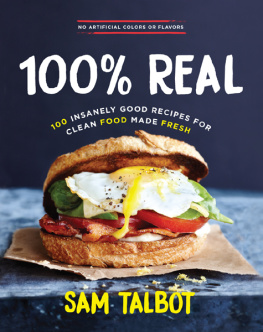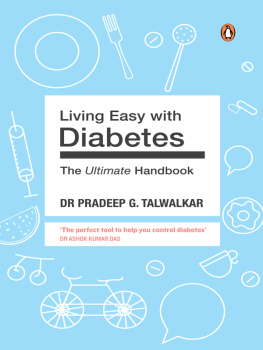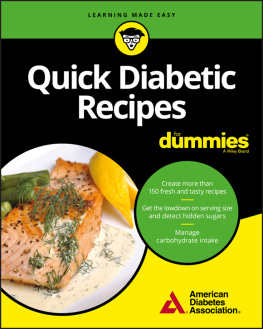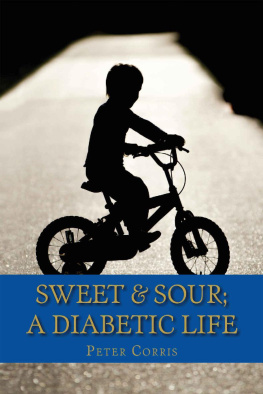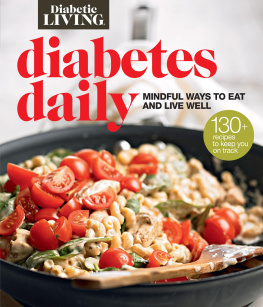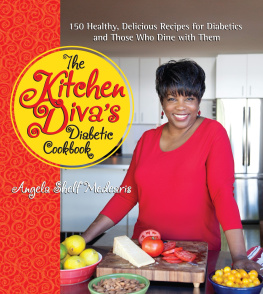




Dear Mama-thanks.

CONTENTS

The Sweet Life is a book aimed not only at diabetics but also at anyone who is health conscious, who doesnt want to follow a fad diet but does want to eat great, real food on a regular basis.
PREFACE
I first met Sam while I was a guest judge on Top Chef and subsequently had the pleasure of getting to know him better as a frequent guest at his delicious and fun restaurant, the Surf Lodge in Montauk, New York.
If you are reading this, you likely already know that Sam is diabetic and has been since he was a child. When he asked if I would contribute to his book, I was a little curious to see the recipes and dishes he had created for those living with (and without) the disease. As chefs, we like to consider the world wide open to us and never like to work with any constraints as to the ingredients we can use or techniques with which we can cook. I wondered if having to cook with a special diet in mind would limit Sams creativity. On the contrary, though, I found that Sam was not hemmed in by the limitations; instead he has created a book that is full of recipes that I find clever, inspirational, healthy, and very, very good.
In Sams cooking both at Surf Lodge and at his newest restaurant, Imperial No. 9, he has a large emphasis on fish and, as it is for me at Le Bernardin, sustainability is of the utmost concern. The food in his restaurants as well as what he offers in this book reflects Sams beliefs and passions when it comes to food sourcingbe it sustainable fish, meat from local farmers, or artisan and organic produce. You can be assured that Sams heart, like his food, is in the right place.
As chefs, when we are asked in our restaurants to accommodate certain dietary requirements due to food allergies, intolerances, or other restrictions, we strive to do so while still giving the customer the best food experience we can. This is what Sam Talbot has endeavored to do and has achieved with The Sweet Life.
The Sweet Life is a book aimed not only at diabetics but also at anyone who is health conscious, who doesnt want to follow a fad diet but does want to eat great, real food on a regular basis. Beyond the recipes, which feature beautiful, natural ingredients, Sam offers solid advice and sound wisdom for good, healthy living.
This book is destined to become the one in your collection that is dog-eared, stained, and showing the signs of frequent use. Sant!
Eric Ripert
Executive Chef/Co-Owner, Le Bernardin
FOREWORD
M anaging diabetes is a marathon: a daily challenge to keep blood sugar under control.
Study after study shows that good diabetes control diminishes the risk for eye, nerve, and kidney damage related to diabetes, and the same goes for prevention of heart attacks and strokes. For some people medication may be necessary, but for anyone who has been diagnosed with type 1 or type 2 diabetes or a prediabetic condition, a good diet is essential for keeping blood sugar in check.
From my very first consultation as Sams endocrinologist, I could tell that his devotion to good diabetes care was matched by a passion for culinary excellence. As both a type 1 diabetic and a healthcare provider, I am always searching for new ways to improve diabetes care both for myself and for my patients and am all too aware of how limited the culinary choices available to those of us on restricted diets can be. In The Sweet Life, Sam has used his experiences as a world-renowned chef to show that it is entirely possible to find both health and happiness in the kitchen.
Such a resource, sadly, is long overdue, and the need has never been greater. In recent years, diabetes has become a global epidemic; it now afflicts an estimated 285 million people worldwide and is expected to afflict nearly 438 million by the year 2030. Early and aggressive treatment is essential and a healthy diet remains a vital component of successful treatment.
Historically the diabetic diet has been anything but sweet. Doctors denied diabetics many foods rather than empowering them to make healthy, personalized, and well-balanced decisions regarding what to eat and when. Patients were told to follow unrealistically rigid and standardized programs that often left them feeling frustrated, ashamed, and alienated: frustrated with healthcare providers for taking away the basic pleasures of taste, variety, and free will; ashamed when they were unable to follow their doctors strict instructions, often resulting in a sense of failure and embarrassment during healthcare visits; and alienated from family and friends for not being able to partake in holiday feasts or enjoy the majority of foods served at dinner parties. Variety was exchanged for uniformity. Anything sweet was frowned upon.
Fortunately, attitudes toward diabetes and diet are evolving. I always tell my patients that each diabetic needs to follow his or her own cookbook. Each of us has a different metabolism and lifestyle, and different foods affect each of us differently. Diabetics need to be given food options, not orders, and that is precisely what The Sweet Life provides. While there may be no perfect recipe for good diabetes control, Sams approach includes all the right ingredients. Life is meant to be lived and to be enjoyed. Diabetes does not have to take the fun out of food. In the pages that follow, Sam has used his extraordinary talents in the kitchen to reinvent the diabetic diet to include variety, balance, and flavor. As an endocrinologist and type 1 diabetic, I am as excited to recommend the recipes in Sams new book as I am to try them myself. The days of the boring diabetic diet are over. Bring on variety. Bring on flavor. Bring on The Sweet Life!
Dr. Jason C. Baker
Dr. Baker is an endocrinologist and assistant professor of medicine at Weill Cornell Medical College. He is also the founder of Marjories Kids, an initiative to improve type 1 diabetes care in the developing world.

it is entirely possible to find both health and happiness in the kitchen.

I learned, at age 12, I had a chronic and very serious disease I would have to live with for the rest of my life.
INTRODUCTION
T he doctor was running a little late, the nurse told my mother and me. She said shed just pop in to his office down the hall to see how long we might have to wait. With the office door ajar, we could hear every word of their conversation. Does the kid know that he has diabetes yet? the doctor asked the nurse. That was how I learned, at age 12, I had a chronic and very serious disease I would have to live with for the rest of my life.
Next page






